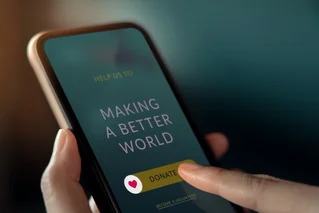
Boost Your Impact with Matching Challenges
How it works and why it’s a smart strategy.
Why help fund a donation matching challenge?
Supplying funding for matching challenges is an incredibly impactful way that donors can help their favorite nonprofits get the critical funding they need to innovate. That is, you supply the funds to be matched for a future matching challenge.
Many charities have campaigns that offer donation matches of 1:1, 2:1, or even 3:1 to incentivize you to give, e.g., for every $1 you give it will be matched by another $1, for every $1 you give it will be matched by $2, and for every $1 you give it will be matched by $3, respectively.
Can you do more good by starting or joining a matching challenge? We certainly believe so! The most successful matching challenges my wife and I have supported resulted in 1,000% to 1,200% increases in the financial impact of our giving. We have used the approach detailed below to increase the effect of our giving by an average of 500%. The overall, combined result is several times our total annual income.
Our approach is simple. We initiate the start of the match fund, build out a larger fund with the help of other donors, then go public for donors to unlock the collective fund.
Setting up a matching challenge
We work with nonprofits to identify a specific project or purpose and build a campaign that accelerates achievement of their strategy. Some projects focus on expanding the geographic coverage of the charity, pilot projects to ensure major impact, or accelerating technology initiatives such as Charity Navigator’s effort to broaden the breadth and depth of their ratings. We have sponsored initiatives such as education of women in the Arab Middle East and the response to the massive explosion in Beirut last year. Another focused on a nonprofit in youth education rethinking their approach on rural education.
A campaign that excites donors contributes significantly to success. Only saying that a gift to an organization will be matched is not enough. Donors need to also know the compelling “why” and “wow” factors.
Financial goals and foundational donors
Once we determine the project or initiative, two financial goals are agreed upon. The first goal establishes the amount that the nonprofit plans to raise from their donor base. We suggest that they find five or more times that amount that we contribute.
The next step is to locate a "foundational" donor who will commit the first amount of money. This is often us. The nonprofit then uses this commitment to challenge like-minded donors to build on the established match fund. This can be foundations or corporations. In our experience it is often members of the nonprofit's Board of Directors or high net worth contributors.
We then encourage the nonprofit to set up a public campaign to double that amount. The nonprofit then builds the momentum for the campaign to get donors, the matchers, and their own contacts to get additional funds for the matching.
Timing of the matching campaign
The final step, having donors “unlock” the match fund, is to time the public campaign to maximize its impact. Several of our nonprofits have chosen Giving Tuesday (the Tuesday after Thanksgiving) as the kick-off date. One educational support organization timed their campaign in advance of the start of the school year. A nonprofit focused on abating the impact of natural disasters selected the start of the hurricane season.
Several organizations have staged the matching campaigns to build in several phases. This amplifies and reinforces excitement for the campaign and is sometimes necessary depending on the size of the match fund to unlock.
Your next steps
Taking the initiative to accelerate support for our favorite nonprofits has been incredibly rewarding. We are thrilled to join with others to build a match fund knowing how much it can help energize people for these worthy causes. There are many ways to band together with others to pool your resources: crowdsourcing, Giving Circle, family, or friends. The rise of these forms of giving makes it easier to be a match funder, not just a donor.
With this in mind, why not approach a nonprofit with your own concept for a matching campaign? Together, you’ll be able to increase your impact multiple times over and do more good.
About the author:
The author, who wishes to remain anonymous, is a long-time supporter of Charity Navigator at a leadership level. He and his wife do more than donate to the causes they care about--they invest in their future. They dedicate their free time to closely working with the organizations they support to foster growth and innovation.





